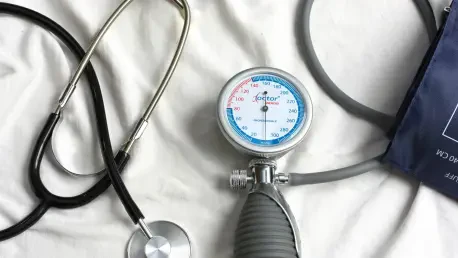Health monitoring in the workplace is an essential practice that ensures the safety of workers exposed to hazardous substances. As regulatory requirements continue to evolve and become more stringent, it is crucial for employers to be prepared to implement comprehensive health monitoring systems. This proactive approach not only helps mitigate risks but also fundamentally safeguards employee well-being. With health monitoring regulations becoming more defined, workplaces need to adopt stringent measures to ensure compliance and promote a health-conscious working environment.
Understanding Health Monitoring Regulations
The Work Health and Safety Regulations 2012 (SA) mandate employers to conduct health monitoring for workers exposed to hazardous chemicals, asbestos, and lead. These preventive measures are designed to detect potential health risks early and prevent long-term harm. Employers must understand the full scope of their responsibilities within these regulations. Specifically, various scenarios require health monitoring, making it imperative to be well-versed with the specifics.
Health monitoring encapsulates a series of regular medical evaluations to track any health changes in workers due to their exposure to hazardous environments. The regulations aim to create a standardized approach to identifying and mitigating health risks before they escalate into more significant issues. By maintaining regular health checks, companies can adhere to legal standards and significantly reduce workplace-related illnesses. This dual approach underlines the importance of not only complying with regulations but also fostering a culture of safety and well-being in the workplace.
Employer’s Responsibilities
Employers have a pivotal role in facilitating health monitoring for their workforce, ensuring that the process is thorough and complies with the outlined regulations. Their responsibilities include arranging health monitoring with qualified medical practitioners who are adept at performing regular evaluations. This obligation extends to workers dealing with specific listed hazardous substances, necessitating adherence to tailored monitoring protocols.
The core objective is to prevent occupational diseases by effectively tracking and managing any health issues that arise from exposure. Employers must ensure that each worker subjected to hazardous conditions undergoes regular health check-ups. This process involves a systematic collaboration with medical experts who can assess the risks accurately. Thus, addressing any potential health threats early mitigates long-term consequences and maintains a healthier, safer working environment.
Role of Medical Practitioners
Registered medical practitioners are integral to the health monitoring process, bringing specialized training and expertise in managing occupational health risks. Their role encompasses conducting medical examinations and various tests related to workers’ exposures. To ensure their practices are efficient and reliable, resources like the guides provided by Safe Work Australia are invaluable. These guides help practitioners adhere to the specifics required for effective health monitoring procedures, ensuring consistency and thoroughness.
Medical practitioners must possess a comprehensive understanding of occupational health hazards and the best practices for monitoring them. They need to be adept at interpreting medical data and diagnosing potential work-related health issues. This expertise ensures that workers receive accurate health evaluations, helping to identify any adverse health effects early. The practitioner’s ability to conduct detailed examinations and interpret results is crucial for maintaining the efficacy of workplace health monitoring protocols.
Hazardous Chemicals
Exposure to hazardous chemicals, such as acrylonitrile, arsenic, benzene, and crystalline silica, necessitates robust health monitoring protocols. Workers handling these substances are at a higher risk of developing occupational diseases related to their exposure. Regular medical evaluations help in tracking any adverse health effects promptly, allowing for early intervention to prevent serious conditions. The objective is to maintain a vigilant approach to health risks associated with hazardous chemicals.
Each chemical presents unique risks, requiring tailored health monitoring strategies. For instance, chemicals like arsenic and benzene can lead to severe health effects if not detected early. Through regular health checks, companies can monitor workers’ exposure levels and their impacts on health. This proactive measure not only complies with legal requirements but also demonstrates a commitment to worker safety. By effectively managing these risks, companies can prevent potential health crises and ensure a safe working environment.
Asbestos and Lead Exposure
Health monitoring becomes critically important for workers involved in activities related to asbestos and lead, given the severe health risks associated with these substances. Workers engaged in licensed asbestos removal and other asbestos-related activities must undergo regular health checks. These checks are essential due to the high risk of developing serious respiratory diseases from asbestos exposure. Similarly, workers exposed to lead need thorough health monitoring, including biological testing like blood lead levels, to manage these risks effectively.
The health monitoring process for asbestos and lead exposure cannot be overemphasized. Both substances are known for their severe and long-term health effects, requiring meticulous attention to monitoring protocols. Regular medical evaluations help in detecting health issues early, preventing complications. By adhering to stringent health monitoring measures, companies ensure that workers exposed to these hazardous materials receive the care and oversight necessary to prevent occupational diseases. This diligent approach is vital for maintaining a healthy workforce and complying with safety regulations.
Mining Sector Obligations
The mining industry poses unique challenges and health risks due to exposure to various hazardous substances. Mine operators are obligated to ensure health monitoring when substantial risk of adverse health effects exists. Techniques and procedures must be employed to detect these effects accurately, safeguarding miners’ health. Specific health monitoring protocols must address the distinct hazards associated with mining activities, ensuring thorough and effective management of occupational health risks.
The mining sector requires a specialized approach to health monitoring, given the array of potential hazards miners face. Ensuring that health monitoring practices are tailored to the industry’s needs is fundamental for safeguarding miner health. Regular and detailed evaluations help identify potential health risks early, enabling timely interventions. This focus on health monitoring underscores the importance of maintaining high standards of safety within the mining industry, ultimately reducing health risks and promoting a safer working environment for miners.
Procedures and Reporting
Health monitoring involves a series of systematic procedures designed to capture comprehensive health data of workers. This includes consultations about their work and medical history, physical examinations, clinical tests (such as urine and blood samples), and x-rays. Medical practitioners must compile detailed health monitoring reports after these procedures, ensuring that the reports focus solely on monitoring related to identified hazardous substances. Confidentiality of unrelated medical conditions must be maintained unless explicit written permission is provided by the worker.
These reports constitute an essential aspect of the health monitoring process, offering insights into the workers’ health status and the effectiveness of monitoring protocols. The thoroughness and accuracy of these reports are vital for effective risk management. Compiling these reports requires a meticulous approach, ensuring that all relevant data is captured and interpreted correctly. This detailed reporting process facilitates informed decision-making for addressing occupational health risks and enhances the overall safety and well-being of the workforce.
Compliance and Collaboration
Health monitoring in the workplace is a vital practice to protect workers who are exposed to hazardous substances. As regulations develop and become stricter, it is crucial for employers to be ready to implement robust health monitoring systems. This proactive stance not only helps reduce risks but also ensures the well-being of employees. As health monitoring regulations are becoming clearer and more defined, it is imperative that workplaces adopt strict measures to comply and foster a health-conscious environment. Ensuring compliance with these regulations not only helps in avoiding legal issues but also enhances the overall productivity and morale of the workforce. By monitoring health closely, employers can identify potential health risks early and take necessary actions to prevent serious health problems. This also shows employees that their health and safety are a top priority, which can lead to a more motivated and satisfied workforce. Therefore, investing in comprehensive health monitoring systems is not just about regulatory compliance; it’s about fostering a safe and healthy workplace culture.









